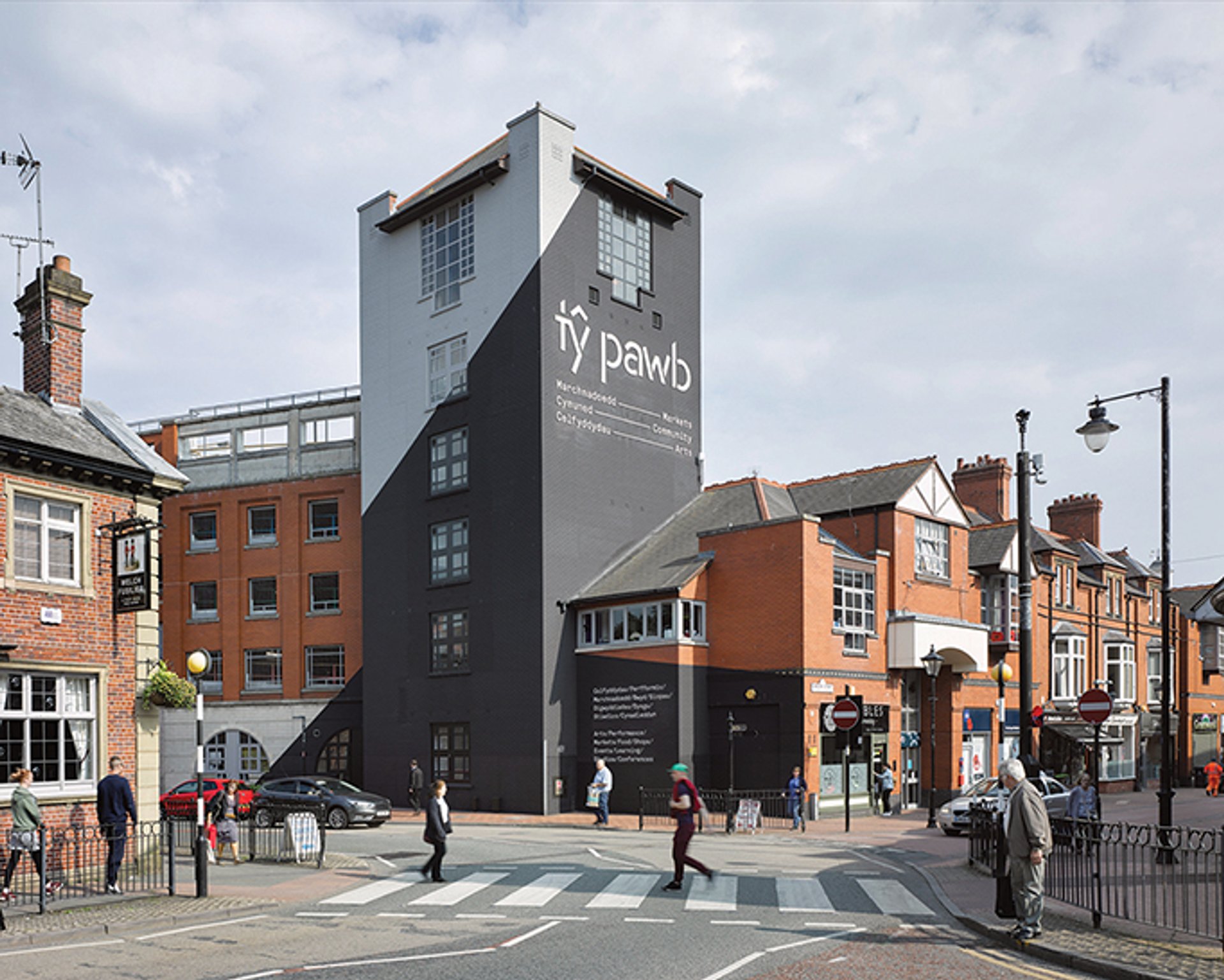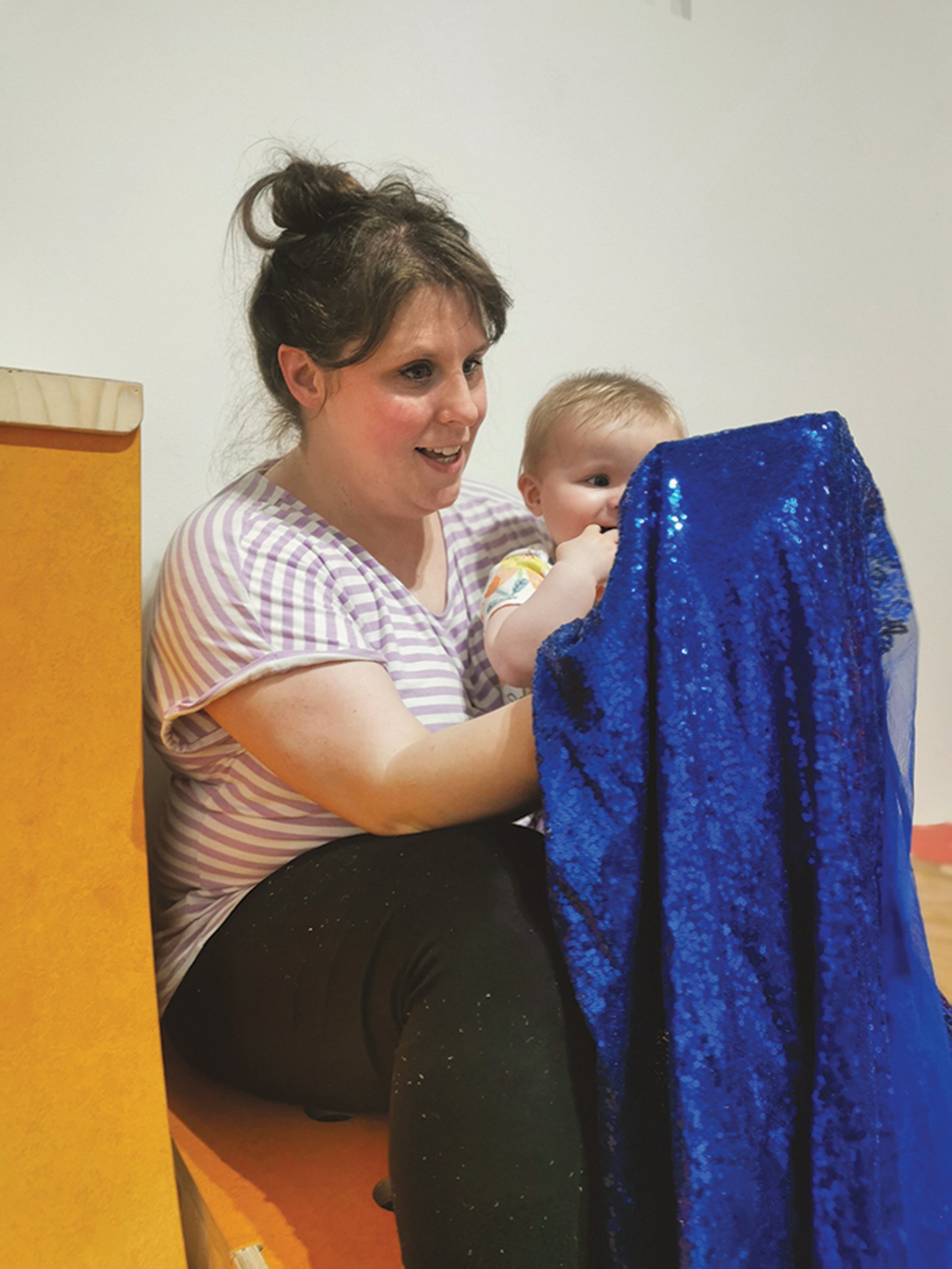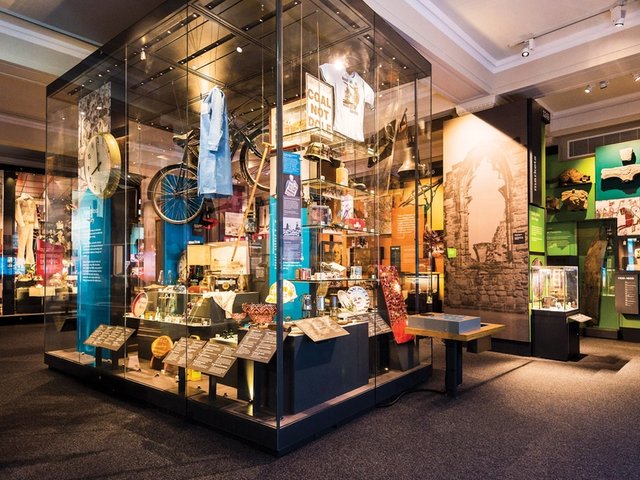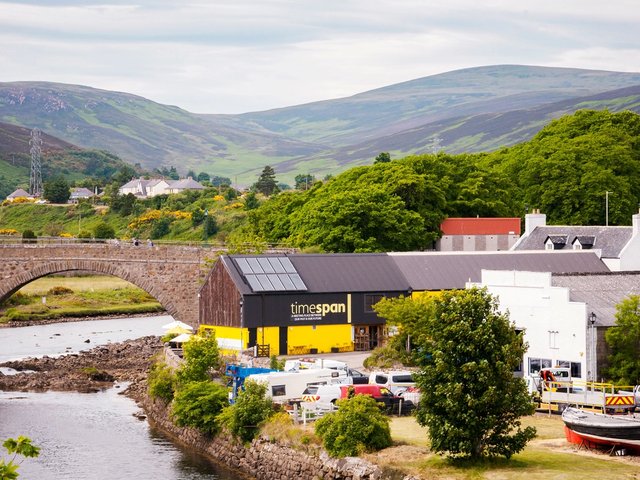• Read about the museums shortlisted for the Art Fund Museum of the Year 2022 here
It’s a safe bet that Tŷ Pawb in Wrexham, north Wales, is unique among all the institutions that have ever made the Museum of the Year shortlists: a centre that includes a fine art gallery, a space for artist-makers, workshops, a dog grooming parlour, an excellent knitting wool shop and a splendid pick-and-mix sweet shop.
This eclectic mix is now a source of local pride in the north Wales city and the centre became the headquarters of the bid for 2025’s UK City of Culture. Although Bradford won, Wrexham made the shortlist of four out of the original 20 bidders—and in May was also announced as one of the five former towns awarded city status in celebration of the Queen’s Jubilee.
Tŷ Pawb, “everyone’s house” in English, was built as a multi-storey car park and general market. The city already had two indoor markets and the struggling newcomer was relaunched in 2018—to local controversy over council spending—as a community arts centre, which can also house substantial exhibitions and live music. Its redevelopment, created by architects Featherstone Young, keeps the independent traders, but builds links between local artists and services, charities, immigrant groups—including the sizeable Portuguese-speaking community and recent arrivals from Syria—and arts institutions, including the city’s museum and archives and others across Wales and beyond. The centre is funded by the council, Arts Council Wales grants—Tŷ Pawb hopes for core funding soon—car park fees and rents from the shops and stalls.
Traders and artist-makers now work side by side, with a shop window for the artist-in-residence. Bespoke furniture and lighting soften the harshness of the concrete shell, which houses a bar and food court as well as adventure play sessions using rugged artist-designed pieces which double as furniture and building materials. Many local workers who come in to the market for a curry or pie and chips wander in for a look around the free gallery exhibitions.

This cultural community resource stands tall in Wrexham © James Morris
The Terracottapolis exhibition, which closed in June, proved particularly popular and poignant. It combined objects from Wrexham museums’ stores and work by contemporary artists to tell the story of the Ruabon marl formation, a vast seam of fine red clay which once supplied scores of brick and tile works, producing decorative terracotta still seen across the UK but also much further afield—one visitor recalled picking up a tile at a site in India and seeing the Ruabon stamp on the back. It was part of the fabric of the lives of many visitors: architectural ornaments made by the Henry Dennis ‘red works’ factory survive on shop façades, walls and rooftops across the city, including the pub directly opposite the museum. Exhibits included a dazzling Edwardian tile doorway from a demolished works manager’s office, brought out after years in archive stores, and the scale model for Antony Gormley’s 120-foot brick giant proposed for Leeds but never built.
The current exhibition, The Tailor’s Tale, centres on a local wonder, the Wrexham Tailor’s Quilt, a patchwork Garden of Eden created by James Williams in the 1850s using scraps of fabric from military uniforms. On loan from the National Museum of Wales, which bought it from his grandson in the 1930s, it was a star attraction at the Tate’s 2014 British Folk Art exhibition. The show also looks at contemporary designers, including Alexander McQueen.
Tŷ Pawb had barely been open two years when the creative director Jo Marsh says they were “forged by fire” in the pandemic. Enforced closures gave them time to work out what they could and should be doing. The smaller gallery, retitled the Useful Art Space, now schedules people, not exhibitions, including play days for children and arts and crafts sessions where information on local services and support is also available. The arts team linked up with isolated locals, setting up WhatsApp groups and posting letters through the doors of older members of the Portuguese community. When the centre’s doors opened again, Welsh, Portuguese, English and Polish speakers met, often for the first time.
Winning the big prize would create at least one extra full-time post but plans for the future, boosted by the £15,000 reward for being on the shortlist, include partnering with a local mental health charity to create a rooftop garden on top of the car park and creating a multicultural hub for North Wales, working with Race Council Cymru.

Jo Marsh, the artistic director of Tŷ Pawb, with her eight-month-old daughter, Cassie, and their favourite object at the museum Courtesy of Tŷ Pawb
Must-see: Creative play material
“I’m passionate about foregrounding play and playwork as cultural and creative practices, so the object I’ve chosen is part of Tŷ Pawb’s collection of creative loose parts for play—curated for us by Penny Wilson of [the art collective] Assemble. This is a huge piece of shimmering blue cloth, about 15 metres long—it’s a favourite with children who come to Tŷ Pawb’s weekly play work sessions in our Useful Art Space. I love the way the scale and texture of this piece transforms the space and children’s experience, becoming an enormous flowing mermaid tail or a strange sparkling landscape. I’m reminded of Hélio Oiticica’s Parangolés capes when I see the children twirling with this piece.”
Jo Marsh, creative director, Tŷ Pawb





